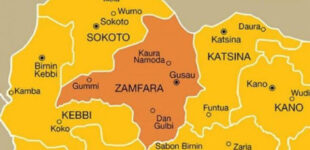The future of food: How artificial intelligence will change the way we feed the world

The global population is growing at an alarming rate, and with it comes the challenge of finding new ways of producing enough food to feed everyone. The current state of the food production industry calls for a shift in strategy if we want to ensure that everyone has access to healthy and nutritious food in the future. Artificial intelligence (AI) is one of the key tools we need to achieve this goal. With AI, we can tackle complex problems, optimize processes, and produce results that would be much harder or even impossible to do manually. In this article, we will explore how AI will change how we feed the world, offer some valuable insights to farmers, and show where AI currently succeeds in food production and where it still has its limitations.
Today’s food system is facing significant pressure. We are facing a dual challenge: we need to feed 9 billion people by 2050 while at the same time tackling climate change and natural resource scarcity. The world of artificial intelligence (AI) can offer exciting possibilities in this regard. AI is software that enables computers to perform tasks that usually require human intelligence. It uses computer programs to analyze large amounts of data and identify patterns among that data. These AI programs can use gathered data to make automated decisions and predictions based on changing needs.
In truth, AI is the technology that will help make the future of food happen. It will help farmers grow crops in more sustainable ways, help food companies meet demand, and create more nutritious food options to serve the future needs of humanity. AI will also be used in other ways, such as in food delivery, virtual assistants, and health care. It has a huge potential to have a positive impact on our daily lives. AI could make food production more sustainable, reduce food waste, and improve food security.
Moreover, food production is a resource-intensive sector. It uses a third of the world’s freshwater, and almost a third of its land is under cultivation. As the world’s population is expected to grow to 9 billion by 2050 (from 7.753 billion in 2020), the challenge to feed all these people is immense. The climate changes, natural resources are decreasing with heavy dependency on the same, and we face more environmental challenges. What is more? Climate change and biodiversity loss threaten food security, as the production of the world’s crops is becoming increasingly unpredictable. Many of the world’s harvest loss is due to pests, diseases, and weeds. The global economy increasingly relies on trade in food, feed, and fiber commodities, but this trade is increasingly threatened by pests and pathogens. The use of pesticides is a controversial issue, and their use is often prohibited or restricted in certain crops and specific countries. This poses a problem for farmers, as they need alternatives to combat pests and diseases.
Furthermore, we must consider how AI will improve and benefit Food Production to offer some insights to farmers and AgriTech startups. Artificial intelligence can help food production in the following ways:
1- AI can help farmers to select the best seeds, fertilizers, and water management systems based on the plants’ needs, their genetic profile, weather forecasts, and soil analysis;
2- AI can manage and optimize spraying and irrigation systems and even manage the planting and harvesting process;
3- AI can help reduce the risk of crop diseases and pests;
4- AI can assist plant breeders in developing new plant varieties resistant to diseases and pests and improving yields with fewer inputs;
5- AI can increase the amount of food produced and reduce waste, both in farms and in the supply chain;
6- AI can help in predicting food prices and informing the market when there is a shortage or surplus of certain food items;
7- AI can monitor food safety, traceability and authenticity.
However, one of the biggest challenges for organic farming is the lower yield compared to conventional farming which makes use of fertilizers. Organic products often fetch a higher price compared to traditional products, but with lower yields, the higher price becomes a problem. AI can be deployed to address this by leveraging relevant data gathered in related areas.
Additionally, AI can be leveraged to support meat producers. The meat production industry is highly dependent on antibiotics, which leads to the emergence of antibiotic-resistant bacteria. This makes meat production less sustainable and poses a public health risk, as the bacteria can be transmitted from animals to humans. AI can help to reduce the use of antibiotics in livestock production and improve the sustainability of production. AI can select the best breeds and breeds, fertilizers, and vitamins and even monitor livestock health. AI can help select the best combinations of genes when breeding animals. It can also be used to identify the health of animals and predict mortality. AI can help select the best location for meat production, forecast the demand for meat, and trace the source of meat.
However, with all those mentioned above, how does consumer behavior get improved in food choice? What is the best way to market food products in 2050, when nine billion people will be demanding food? The demand for food will increase immensely as the population is growing and people are becoming wealthier and eating more with better information. Food companies must adapt to these changes and provide food consumers with what they want (on time) and are willing to pay for. AI can swing in here to help food companies understand what consumers want and need for the future of food based on their specific requirements. It can analyze large amounts of relevant data, such as internet searches (real-time demand), social media posts, and comments (available information), and identify patterns among this data. AI can help companies understand what consumers want and are willing to pay for. Food companies can use AI to create new and innovative products based on consumers’ needs and requirements. AI can also help companies understand how the product should look and how it should be marketed.
Although, the main goal of AI in food production is to create a system that will enable us to produce sufficient amounts of food for everyone on this planet. Modern AI solutions optimize and streamline different processes across the food production chain – from farm to fork. The AI solutions used in food production are generally divided into three categories: Predictive analytics, machine learning, and robotic process automation. Predictive analytics forecast demand, optimize production lines and detect anomalies in the production process. Machine learning optimizes quality control, select crops and seeds, and special processing procedures. Robotic process automation is used to control and optimize the entire production process for consistent desired results.
Also worthy of note, the food industry is a complex system of supply and distribution chains. At each step of the process, there are many opportunities to improve our operations. With AI, we can optimize the entire chain, from production to distribution and storage, to ultimately enhance customers’ experiences. With AI, we can optimize the selection and distribution of crops. AI can scan the fields and use satellite imagery to identify which crops are healthiest, helping farmers to decide which crops to harvest. This information can then determine which crops to distribute to which places. AI can also optimize the selection of seeds, helping farmers to choose seeds that are best suited for the current conditions, like soil type and weather. This can significantly reduce the number of seeds needed, saving farmers money by cutting down on waste.
Another critical aspect of food production is food quality and safety. AI solutions can monitor and analyze the entire food production process, detecting possible hazards and taking measures to minimize the risks. AI solutions can be used to analyze images and create a map of the entire production process, which can be used to identify possible issues and problems. AI can also monitor sensors placed throughout the production process, such as those used in refrigerators, to ensure that proper conditions are maintained for the best results.
In addition, another important application of AI in the food industry is robotics. The use of robots in food production is nothing new, and it’s been around for decades. Robots are used to perform tasks that humans find difficult or too dangerous to perform, such as harvesting crops. Recently, AI has been integrated into robotic systems. This enables robots to make decisions that were previously only made by humans. AI can be used to control the robot and decide how to perform the task. Robots can perform various tasks, like picking and packaging crops, cleaning the production lines and facilities, or even packaging the final product.
Moreover, modern AI can also be used to optimize the storage and transportation of food. One of the main challenges to food transportation is ensuring the suitable temperature remains constant throughout the journey. This is important for food safety, as extreme temperatures can spoil food. AI can be used to monitor the temperature in vehicles. When a temperature change is detected, AI can send a notification to the driver for possible intervention. There are also AI solutions designed to analyze the road conditions and adjust the vehicle’s speed to minimize the risk of food spoilage. Moreover, AI can optimize the routes food vehicles take. AI can be used to analyze the weather conditions and traffic, and it can also predict the best route based on the information received.
In conclusion, the world’s food system faces a dual challenge: feeding 9 billion people by 2050 while at the same time tackling climate change and natural resource scarcity. The future of food holds enormous promise as AI can be used to make food production more sustainable, reduce food waste and increase food security. To make this happen, however, governments and businesses need to invest more resources in AI and ensure that this technology is used in the best possible way to tackle complex problems, optimize processes, and produce results that would be much harder or even impossible to do manually. Thank you for the sustained investment in time. Please share and follow me on Medium: https://medium.com/@roariyo and LinkedIn: https://www.linkedin.com/in/olufemi-ariyo-923ba6130/ or email me: [email protected].














There are no comments at the moment, do you want to add one?
Write a comment